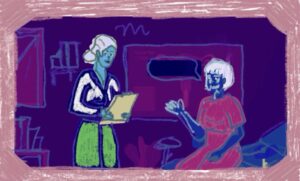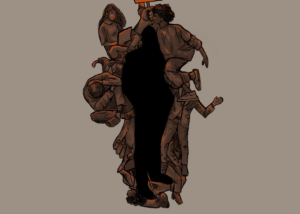It is no secret that many student clubs at Georgetown struggle to make do with meager budgets. As a response, the Georgetown University Student Association’s Finance and Appropriations Committee has floated the possibility of raising the annual Student Activity Fee to increase the amount of funding available to student clubs. It’s an idea worth considering, so long as GUSA can demonstrate that dramatic funding increases are in line with clubs’ needs.
Since the beginning of the last decade, GUSA has diverted $50 of the annual $100 fee to the Student Activities Fee Endowment, with the hope that by 2010 or 2011 it would be generating enough interest to eliminate the need for the student activity fee altogether. Due to the University and past GUSA members’ mismanagement, the SAFE has no chance of doing so before 2027. GUSA’s reform plan wisely proposes that we stop funding the endowment and use the full $100 fee to fund clubs, doubling the amount of money that is available for student groups.
But GUSA is also discussing the possibility of raising the activities fee and pegging it to inflation. This would dramatically increase funding for organizations that are underfunded, like the Center for Social Justice and Club Sports, and allow GUSA to finance initiatives with uncertain futures, like the Collegiate Readership program. Students should pay a higher fee to make sure these clubs reach their full potential—but only if doubling the amount of money available to clubs from the current $100 Student Activity Fee is not enough to bolster these programs.
If it ultimately proposes an increase in the fee, GUSA must have proof that even allocating the full $100 to student clubs and activities is not enough to provide clubs with as much funding as they need to be vibrant organizations. While Club Sports is perennially strapped for cash, not every club needs more than a 100 percent increase in its budget. GUSA itself, famous for gratuitous pizza parties, is a good example of a student organization that does not need so much extra funding. Because GUSA allocates its own budget, the Senate should make a commitment not to increase it. By doing so, GUSA will relieve any doubt students might have about responsible allocation of their money.
GUSA is poised to embark on one of the most consequential reforms in its history. The SAFE reform has the potential to dramatically improve student life for the better, but GUSA must now focus on clubs’ actual needs and concretely demonstrate that these funding increases are truly warranted.
Proposed funding reform (mostly) a safe bet
By the Editorial Board
November 11, 2010





“Cautiously supports”= we agree, but if it fails we reserve the right to say I told you so. Really bold journalism there.
“GUSA itself, famous for gratuitous pizza parties, is a good example of a student organization that does not need so much extra funding. Because GUSA allocates its own budget, the Senate should make a commitment not to increase it. ”
Most of GUSA’s funding goes into those pesky things like funding GUTS buses, the Collegiate Readership Program, the $30,000 Georgetown Fund for clubs and individuals to get funding outside of SAC and the advisory boards, the Supper with the Jesuits dinner, and (for a brief time, until GUSA got it independent funding) the GUSA Summer Fellows program.
But yeah, let’s peg GUSA for the fact that they’ve ordered pizza for a few townhall meetings.
* * *
On a related note, the increase in the student activities fee doesn’t have to be 100% dedicated to clubs’ budgets. There are a host of other student life activities that could be funded, such as the initiatives mentioned above.
And pegging the SAF to inflation:
(1) This will result in increases of only $1-3/year, a very, very modest sum, and more importantly
(2) Keeping up with inflation means that real value of the money is kept at the same rate — so, in 2027, the Voice doesn’t have to run another editorial bemoaning the fact that GUSA’s incompetence in not pegging the SAF it to inflation means that the $700,000 distributed every year is worth the equivalent of $100,000 today. For example, the actual value of the fee amount has actually decreased by about $130,000 since the fee was instituted in 2001 ($650,000 in 2001 dollars was the equivalent of $789,000 in 2009).